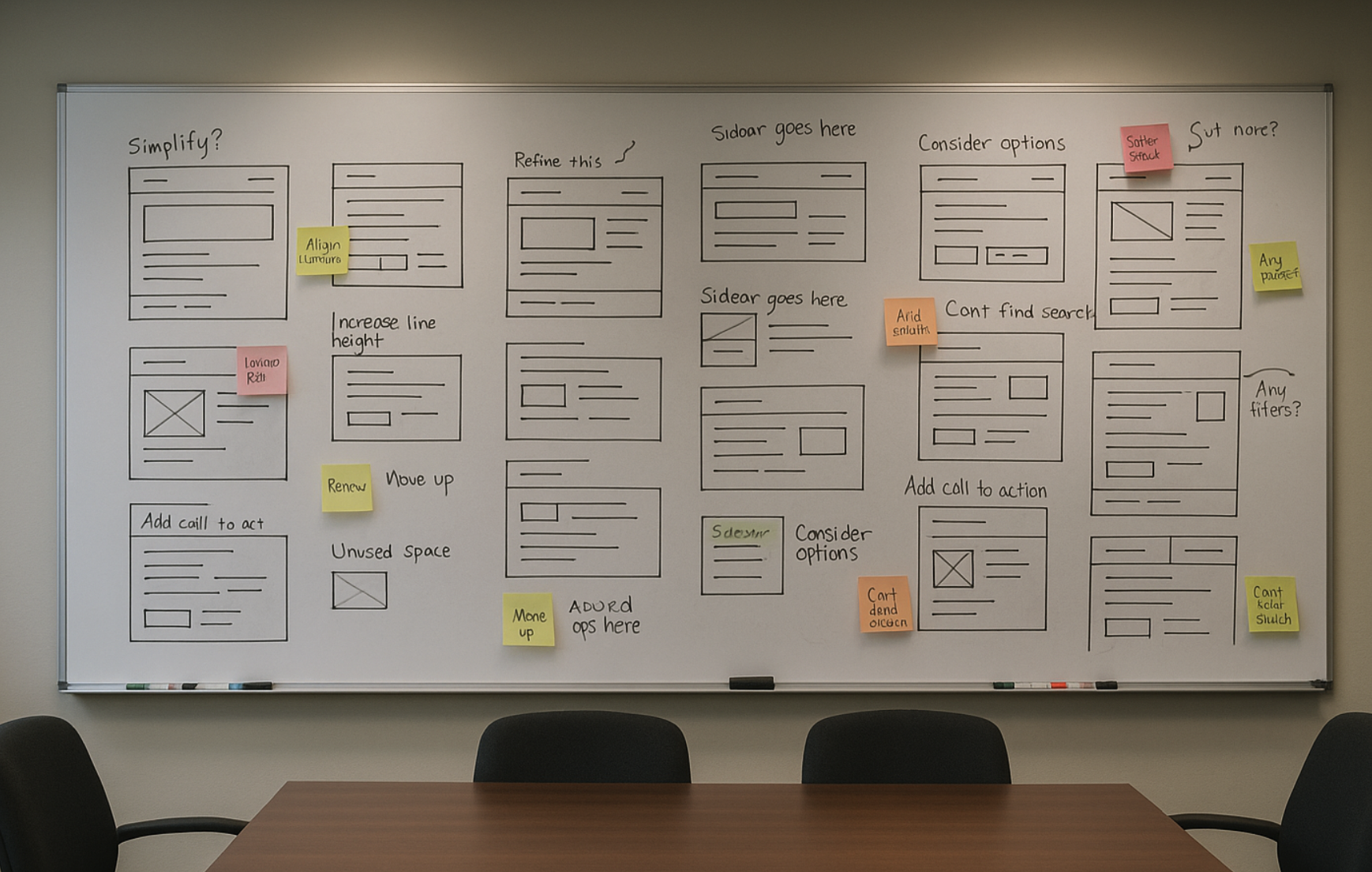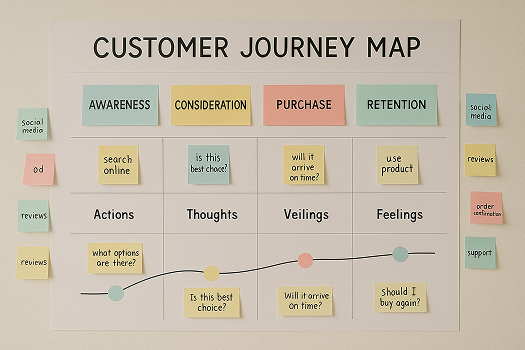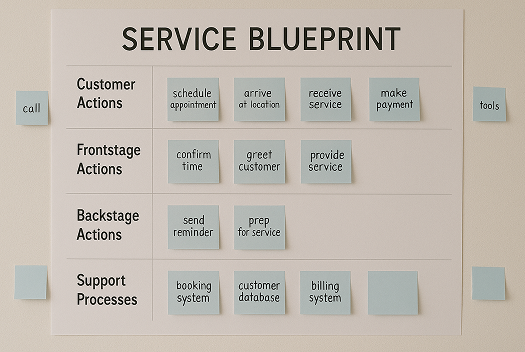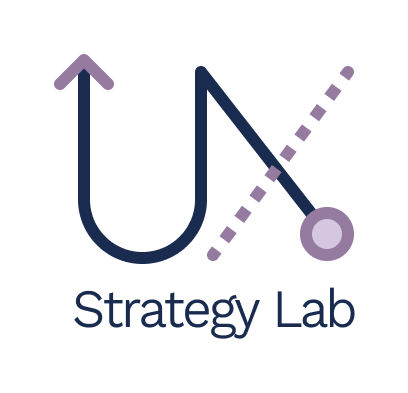UX Strategy Lab: Process
Beyond Pretty Interfaces:
UX as Business Strategy
My proven process for creating experiences that drive growth, efficiency, and competitive advantage

My UX Design Process: Transforming Complex Challenges into Intuitive Experiences
Introduction: How I Approach UX Challenges
As a strategic UX leader with over 15 years of experience at organizations including Capital One, Brightfield, Upside Business Travel, Network Solutions, Siteworx, and the Matrix Group, I've developed a comprehensive approach to solving complex design challenges across various industries and platforms. This case study outlines my end-to-end process from initial discovery through implementation and measurement, drawing on real projects where I've led teams to create exceptional digital experiences.
Rather than focusing on specific industries or companies, this document
highlights the consistent methodologies, tools, and frameworks I use to drive results, revealing how I think, lead teams, and deliver impactful solutions.
Leadership Style: Strategic Vision with Hands-On Execution
My approach to UX leadership combines strategic direction with practical execution. This dual perspective allows me to guide teams with credibility while maintaining connection to the day-to-day realities of design execution.
Strategic Leadership
- Team Building & Development: I build and mentor diverse teams of designers, researchers, and content strategists, fostering collaboration and growth
- Vision Setting & Alignment: I develop comprehensive design strategies that connect business objectives with user needs
- Process Implementation: I establish scalable design systems and workflows that improve efficiency and consistency
- Cross-Functional Collaboration: I facilitate productive relationships between design, product, engineering, and business stakeholders
Hands-On Contribution
- User Research: I conduct interviews, usability tests, and other research activities to deeply understand user needs
- Design Creation: I develop wireframes, user flows, and high-fidelity prototypes for key product experiences
- Prototype Development: I build interactive prototypes to validate concepts with users and stakeholders
- Design Documentation: I create clear specifications that enable efficient implementation
User-Centered Research: Understanding Deep Human Needs
I begin every project with a comprehensive research phase designed to uncover genuine user needs and behaviors.
This multi-faceted approach ensures I understand both the articulated and unarticulated needs of users while identifying strategic opportunities for differentiation.
Qualitative Methods I Deploy:
- In-depth interviews: Typically 20+ interviews with primary users and stakeholders to uncover needs, pain points, and motivations
- Contextual inquiries: Observing users in their natural environments to understand workflows and identify unstated needs
- Workflow shadowing: Documenting how users currently accomplish tasks and where they struggle with existing tools
- Journey mapping workshops: Collaborative sessions to visualize the end-to-end user experience across touchpoints
- Card sorting exercises: Understanding users' mental models and information organization preferences
- Usability testing: Evaluating existing solutions and testing new concepts through iterative prototype feedback sessions
Quantitative Analysis:
- Analytics review: Identifying patterns in user behavior and platform usage across different segments
- Support ticket analysis: Mining help requests to identify recurring pain points and prioritize improvements
- A/B testing: Comparing different design approaches to optimize performance metrics and conversion
- Survey research: Gathering structured feedback from larger user populations to validate hypotheses
- Task completion metrics: Measuring efficiency and success rates for critical user journeys
- Behavioral analytics: Tracking user paths, drop-offs, and engagement patterns to identify optimization opportunities
Competitive Research:
- Heuristic evaluations: Assessing competitor strengths and weaknesses against established UX principles
- Feature benchmarking: Comparing capabilities across platforms to identify gaps and opportunities
- UX patterns analysis: Identifying emerging standards and innovative approaches in the competitive landscape
- Gap analysis: Finding opportunities for differentiation and improvement based on unmet user needs
- Trend mapping: Tracking the evolution of industry patterns to anticipate future directions
- Best-in-class reviews: Analyzing exceptional experiences from adjacent industries for transferable insights
Common User Challenges I've Solved
Across projects and industries, I've consistently identified and addressed several core user challenges. These patterns emerge regardless of industry - whether in financial services, travel, healthcare, or data analytics - because they reflect fundamental human needs in digital experiences.
- Complex data visualization: Transforming overwhelming data into clear, meaningful insights
- Progressive disclosure: Revealing information in manageable layers to prevent overwhelm
- Information architecture: Creating intuitive navigation and content organization
- Decision support: Helping users make confident choices with appropriate guidance
- Process streamlining: Reducing steps in critical user flows by 30-70%
- Cross-platform integration: Creating seamless experiences across devices and touchpoints
- Automation balance: Finding the right mix of automated assistance and user control
- Template systems: Developing reusable frameworks that accelerate common tasks
- Transparency design: Creating interfaces that clarify how systems work and use data
- Status visibility: Providing clear feedback about system state and user actions
- Error prevention: Designing intuitive interfaces that minimize mistakes
- Support integration: Seamlessly connecting human assistance at critical moments
My Design Process: From Insight to Implementation
My approach follows a consistent yet flexible framework that adapts to each project's unique needs. This process is never linear - I work in cycles of learning and refinement, continuously bringing in user feedback to improve the solution.
01
Discovery & Definition
- Stakeholder alignment sessions to define success metrics
- Research planning and execution
- User persona and journey map development
- Problem definition and opportunity framing
- Project planning and resource alignment
02
Strategy & Concept Development
- Design principles creation
- Information architecture planning
- Initial concept sketching and ideation
- Early prototype development
- Concept validation with users and stakeholders
03
Iterative Design Development
- Design system establishment
- Component library creation
- Wireframe development
- High-fidelity design creation
- Regular usability testing cycles
- Cross-functional design reviews
04
Implementation Support
- Engineering handoff and documentation
- Development collaboration
- QA assistance and acceptance testing
- Launch planning and preparation
- Post-launch monitoring and optimization
Special Focus: Service Design & Journey Mapping
One of my distinctive strengths is mapping the complete user journey beyond digital touchpoints. This holistic approach
helps identify critical opportunities that narrow, screen-focused design might miss:

Comprehensive Journey Mapping
- End-to-end experience visualization: Mapping all steps in a user's journey, including those that happen outside digital interfaces
- Emotion tracking: Identifying moments of delight, friction, and anxiety throughout the journey
- Touchpoint integration: Connecting digital and human touchpoints into a cohesive experience
- Opportunity spotting: Finding gaps where new features or services could address unmet needs

Service Blueprinting
- Front and backstage mapping: Connecting visible user experiences with behind-the-scenes processes
- Cross-functional alignment: Creating shared understanding across teams and departments
- System integration planning: Identifying how different technologies must work together
- Support model design:
Developing frameworks for human assistance at critical moments
Case Examples: My Process Applied to Different Challenges
Example 1: Simplifying Complex Information Visualization
Challenge: Users struggled to understand complex data relationships and extract meaningful insights.

My Approach:
- Conducted 25+ user interviews to understand mental models around data
- Created journey maps of the insight generation process
- Developed a progressive disclosure framework for information presentation
- Designed an AI-assisted insight generation system with human oversight
- Built a template-based reporting tool that reduced creation time by 75%
- Implemented A/B testing to optimize visualization approaches
Results:
- Reduced insight generation time from hours to minutes
- Increased platform usage by 17%
- Improved user satisfaction scores across all segments
- Enhanced decision-making confidence among users
Example 2: Streamlining Multi-Step Service Coordination
Challenge: Users faced fragmented experiences when coordinating complex service bookings across multiple systems.

My Approach:
- Shadowed users during their booking and management workflows
- Conducted diary studies with 15 users over two weeks
- Created service blueprints connecting digital and human touchpoints
- Developed a mobile-first design strategy with cross-platform consistency
- Designed unified booking flows that integrated previously separate services
- Implemented real-time notification systems to enhance visibility
Results:
- Reduced booking time from hours to minutes
- Increased mobile adoption by 35%
- Improved support efficiency through proactive issue resolution
- Enhanced user satisfaction and loyalty metrics
Example 3: Enhancing Trust in Complex Decision Making
Challenge: Users lacked confidence in making important decisions due to unclear information presentation.

My Approach:
- Analyzed support interactions to identify common concerns
- Mapped the decision journey across multiple touchpoints
- Created information hierarchy framework for progressive disclosure
- Designed status visualization systems for better transparency
- Developed interactive tools to model outcomes and scenarios
- Implemented guided experiences for first-time users
Results:
- Increased decision confidence among users
- Reduced support calls by 30%
- Improved feature adoption and platform engagement
- Enhanced overall satisfaction and trust metrics
Design System Development: Scaling Design Excellence
A core element of my approach is establishing comprehensive design systems that ensure consistency, efficiency, and scalability. This systematic approach ensures that design excellence scales effectively across complex products and platforms.
My Design System Methodology
- Component inventory and audit: Assessing existing elements to identify patterns and inconsistencies
- Modular architecture: Building flexible, reusable components adaptable to various contexts
- Pattern library development: Creating documented, standardized interaction patterns
- Governance framework: Establishing clear processes for system maintenance and evolution
- Team training and adoption: Ensuring effective implementation across design and development teams
Business Benefits Delivered
- Development efficiency: Reducing implementation time by 25-40%
- Design consistency: Ensuring cohesive experiences across products and platforms
- Quality improvement: Reducing UI bugs and inconsistencies by standardizing patterns
- Collaboration enhancement: Creating shared language between design and development
- Scalability: Enabling faster feature development and platform expansion
Measuring Success: Metrics-Driven Design
I believe strongly in connecting design decisions to measurable outcomes. This commitment to measurement ensures design decisions are grounded in impact rather than opinion, creating accountability for delivering real value.
Key Performance Indicators I Prioritize
- Efficiency metrics: Task completion time, error rates, support ticket volume
- Engagement measures: Feature adoption, session frequency, retention patterns
- Satisfaction indicators: NPS scores, satisfaction ratings, qualitative feedback
- Business outcomes: Conversion rates, revenue impact, customer lifetime value
Measurement Approaches
- Benchmarking: Establishing baselines before design changes
- A/B testing: Comparing performance of different design approaches
- Funnel analysis: Tracking progression through critical user journeys
- Longitudinal studies: Observing changes in behavior over time
- Multivariate testing: Assessing combined impact of multiple design elements
Team Leadership & Development
Beyond delivering exceptional designs, I'm passionate about building high-performing teams. This focus on team development creates sustainable design capability that extends beyond individual projects.
Team Building Approach
- Capability assessment: Identifying team strengths and development areas
- Growth planning: Creating personalized development plans for each team member
- Skill diversification: Building balanced teams with complementary strengths
- Knowledge sharing: Establishing practices for continuous learning and improvement
- Performance coaching: Providing regular feedback and guidance
Design Culture Development
- Design thinking workshops: Training cross-functional teams in user-centered methodologies
- Design review frameworks: Establishing productive critique processes
- Case study creation: Documenting successful projects and learnings
- Design principles definition: Creating shared values to guide decision-making
- Research evangelism: Building organization-wide appreciation for user insights
My Design Philosophy
My approach to UX design is built on several core beliefs. These principles have guided my work across multiple industries and product types, consistently delivering experiences that delight users and drive business results.
- User needs transcend industry boundaries - While context matters, fundamental human needs for clarity, efficiency, and confidence appear across all domains
- Research investment pays dividends - Deep understanding of users always leads to better solutions and prevents costly rework
- Design is a team sport - The best solutions emerge from collaborative processes that bring diverse perspectives together
- Systems thinking beats point solutions - Addressing the entire user journey creates more impactful experiences than optimizing isolated touchpoints
- Measurement matters - Connecting design decisions to measurable outcomes builds credibility and ensures we're delivering real value

